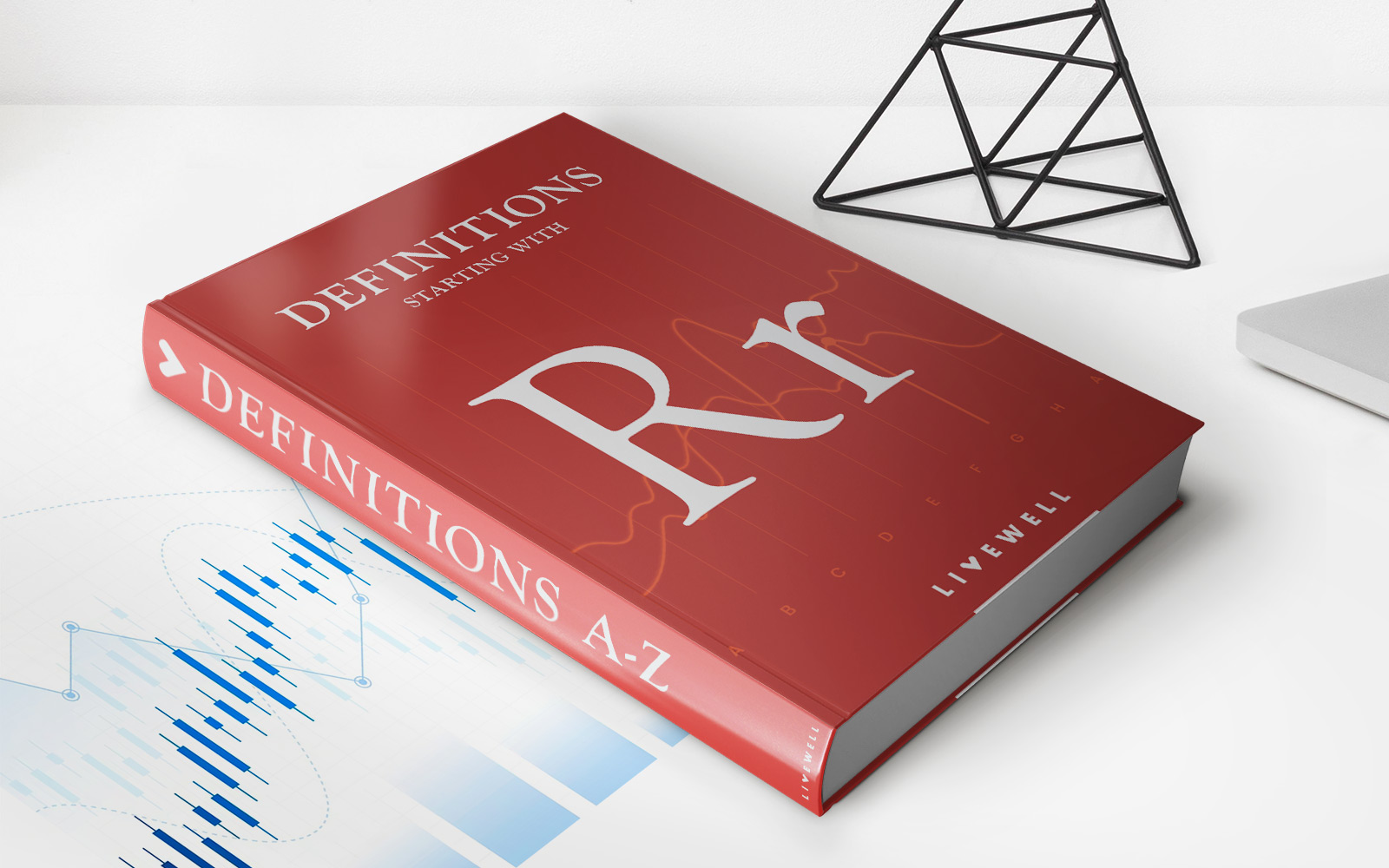

Finance
What Is A Bank Statement Balance
Published: March 2, 2024
Learn the importance of bank statement balance in finance and how it impacts your financial records. Understand how to reconcile your bank statement for accurate financial management.
(Many of the links in this article redirect to a specific reviewed product. Your purchase of these products through affiliate links helps to generate commission for LiveWell, at no extra cost. Learn more)
Table of Contents
**
Introduction
**
Welcome to the world of personal finance, where understanding your bank statement balance is a crucial aspect of managing your money. Whether you’re a seasoned financial guru or just starting to dip your toes into the vast ocean of banking, comprehending your bank statement balance is essential for maintaining financial health and making informed decisions.
At its core, a bank statement balance serves as a snapshot of your financial standing at a specific point in time. It reflects the amount of money in your account after factoring in all deposits, withdrawals, and any additional transactions within a given period. This balance is not only a reflection of your financial transactions but also a tool for tracking your spending, managing your budget, and identifying potential discrepancies.
Understanding the intricacies of your bank statement balance empowers you to take control of your finances, spot irregularities, and plan for the future. In this comprehensive guide, we will delve into the definition, importance, and practical aspects of bank statement balances, equipping you with the knowledge needed to navigate the financial landscape with confidence.
**
Definition of Bank Statement Balance
**
Put simply, the bank statement balance represents the amount of money in your account at a specific point in time. It is a reflection of the funds available to you after accounting for all transactions, including deposits, withdrawals, checks, and electronic transfers, within a designated period, typically a month. This balance is documented in your bank statement, which is a summary of all the transactions related to your account over a specific period.
When you receive your bank statement, you will see the opening balance, which is the amount in your account at the beginning of the statement period, and the closing balance, which is the amount at the end of the period. The closing balance is the bank statement balance that indicates the actual amount of money in your account when the statement was generated. It is important to note that this balance may differ from your current account balance, especially if there are pending transactions or outstanding checks that have not yet been processed by the bank.
Furthermore, the bank statement balance also encompasses any interest earned on your account, as well as fees or charges incurred during the statement period. By reconciling your own records with the bank statement, you can ensure that the reported balance aligns with your own financial records, thus maintaining accuracy and transparency in your financial management.
**
Importance of Bank Statement Balance
**
The bank statement balance holds significant importance in managing personal finances and ensuring financial stability. Understanding and regularly monitoring this balance is crucial for several reasons:
- Financial Awareness: Your bank statement balance provides a clear overview of your available funds, enabling you to make informed decisions about spending, saving, and investing. By knowing your exact financial standing, you can avoid overdrawing your account and incurring unnecessary fees.
- Budgeting and Planning: A precise understanding of your bank statement balance allows you to create and maintain an effective budget. It serves as a foundational element in managing your expenses, setting savings goals, and planning for future financial endeavors.
- Detecting Errors and Fraud: Regularly reviewing your bank statement balance enables you to identify any unauthorized transactions, errors, or discrepancies. This proactive approach can help in detecting potential fraud or banking mistakes, allowing for timely resolution and safeguarding your financial assets.
- Financial Accountability: By reconciling your own financial records with the bank statement balance, you take ownership of your financial responsibilities. This accountability fosters a sense of control and awareness, leading to better financial habits and decision-making.
- Building Credit and Trust: Maintaining a healthy bank statement balance reflects positively on your financial reliability and creditworthiness. Consistently managing your funds and avoiding overdrafts can contribute to a positive banking history, fostering trust with financial institutions and potential lenders.
In essence, the bank statement balance serves as a cornerstone of financial management, providing a real-time snapshot of your financial health and serving as a fundamental tool for responsible money management.
**
How to Find Your Bank Statement Balance
**
Locating your bank statement balance is a straightforward process that can be accomplished through various channels, offering convenience and accessibility to account holders:
- Online Banking: Many financial institutions provide online banking platforms or mobile apps that allow account holders to view their bank statement balance in real time. By logging into your online banking account, you can access your current and previous bank statements, review transaction details, and ascertain your latest account balance.
- ATM Services: Automated Teller Machines (ATMs) offer the option to check your account balance, providing a quick and convenient method to retrieve your bank statement balance at any time. Simply insert your debit card and follow the on-screen prompts to view your account balance.
- Bank Statements: Periodically, your bank will issue a paper or electronic bank statement summarizing all transactions and displaying your current account balance. These statements are typically generated on a monthly basis and can be accessed through your online banking portal or delivered to your mailing address.
- Customer Service: Contacting your bank’s customer service department allows you to inquire about your bank statement balance. Whether through phone, email, or in-person visits to a branch, customer service representatives can provide assistance in retrieving your account balance and addressing any related queries.
It is important to note that while these methods enable you to access your bank statement balance, it is essential to prioritize security and privacy when utilizing online or electronic banking services. Protecting your login credentials and verifying the authenticity of banking communications are vital practices to safeguard your financial information.
By leveraging these accessible channels, you can easily stay informed about your bank statement balance, empowering you to make informed financial decisions and maintain control over your monetary resources.
**
Understanding Bank Statement Balance
**
Comprehending your bank statement balance involves delving into the intricacies of financial transactions, account activity, and the factors influencing your available funds. Here are key aspects to consider when seeking a deeper understanding of your bank statement balance:
- Transaction Types: Your bank statement balance encompasses various types of transactions, including deposits, withdrawals, transfers, and fees. Each transaction impacts your balance, and understanding the nature of these transactions is essential for accurate financial management.
- Pending Transactions: Pending transactions, such as debit card purchases or electronic transfers, may not be immediately reflected in your bank statement balance. It is important to consider these pending transactions when assessing your actual available funds, as they will impact your account balance once processed by the bank.
- Interest and Fees: Your bank statement balance reflects any interest earned on your account, as well as fees or charges incurred. Monitoring these components ensures that you have a comprehensive view of your financial standing and can take necessary actions to optimize your account.
- Reconciliation: Reconciling your own financial records with the bank statement balance is an essential practice for ensuring accuracy and identifying discrepancies. By comparing your records with the bank statement, you can verify the reported balance and address any inconsistencies.
- Account Limitations: Certain accounts may have limitations on the number of transactions or withdrawals allowed within a specific period. Understanding these limitations and their impact on your bank statement balance is crucial for avoiding penalties and maintaining financial stability.
By gaining a thorough understanding of these elements, you can navigate your bank statement balance with confidence, proactively manage your finances, and make informed decisions aligned with your financial goals and priorities.
**
Common Issues with Bank Statement Balance
**
While the bank statement balance serves as a valuable tool for financial management, several common issues and challenges can arise, impacting the accuracy and interpretation of this crucial financial metric:
- Pending Transactions: Pending transactions, such as outstanding checks or debit card purchases that have not yet cleared, can create discrepancies between your actual account balance and the reported bank statement balance. It is important to consider these pending transactions when assessing your available funds to avoid overspending.
- Bank Errors: Inaccuracies or errors in your bank statement, such as duplicate charges or erroneous fees, can lead to discrepancies in your reported balance. Regularly reviewing your bank statement and promptly addressing any discrepancies with your financial institution is essential for rectifying such errors.
- Overdrafts and Insufficient Funds: If your account experiences overdrafts or has insufficient funds to cover certain transactions, it can result in negative balances or additional fees. Monitoring your account balance and implementing measures to avoid overdrafts is crucial for maintaining financial stability.
- Unrecognized Transactions: Unidentified or unauthorized transactions on your bank statement can indicate potential fraud or security breaches. Promptly reporting and addressing these unrecognized transactions with your bank is vital for safeguarding your financial assets and identity.
- Interest and Fees: Fluctuations in interest rates, as well as the imposition of fees and charges by the bank, can impact your bank statement balance. Understanding the impact of these financial components on your balance is essential for accurate financial planning and management.
Addressing these common issues requires vigilance, proactive monitoring of your account activity, and clear communication with your financial institution. By staying attentive to these potential challenges, you can maintain the integrity of your bank statement balance and mitigate the impact of these issues on your financial well-being.
**
Tips for Managing Bank Statement Balance
**
Effectively managing your bank statement balance is essential for maintaining financial stability and making informed decisions. Consider the following tips to optimize your financial management and ensure the accuracy of your bank statement balance:
- Regular Monitoring: Consistently monitor your bank statement balance to stay informed about your available funds and account activity. This proactive approach allows you to detect any discrepancies or unauthorized transactions promptly.
- Record Keeping: Maintain accurate records of your financial transactions, including deposits, withdrawals, and transfers. Comparing your records with the bank statement balance helps in identifying any discrepancies and ensuring the accuracy of reported balances.
- Budgeting: Create and adhere to a comprehensive budget that aligns with your financial goals and priorities. By managing your expenses and savings, you can maintain a healthy bank statement balance and avoid overspending.
- Communication with Bank: Establish open communication with your financial institution to address any concerns or discrepancies related to your bank statement balance. Promptly reporting any errors or unauthorized transactions is crucial for timely resolution.
- Avoiding Overdrafts: Implement measures to prevent overdrawing your account, such as setting up alerts for low balances and monitoring pending transactions. Avoiding overdrafts helps in maintaining a positive bank statement balance and avoiding associated fees.
- Security Measures: Prioritize the security of your banking information by safeguarding your login credentials and monitoring your account for any unusual activity. Protecting your account from fraud and unauthorized access is essential for preserving the integrity of your bank statement balance.
By incorporating these tips into your financial management practices, you can effectively manage your bank statement balance, mitigate potential issues, and foster a proactive approach to maintaining financial health.
**
Conclusion
**
Understanding and managing your bank statement balance is a fundamental aspect of personal finance, empowering you to maintain financial stability, make informed decisions, and safeguard your monetary resources. By grasping the intricacies of your bank statement balance and implementing proactive financial management practices, you can navigate the complexities of banking with confidence and clarity.
From regularly monitoring your account activity to reconciling your own financial records with the reported balance, each step contributes to a comprehensive understanding of your financial standing. By staying attentive to common issues such as pending transactions, bank errors, and unauthorized activity, you can address potential discrepancies and maintain the accuracy of your bank statement balance.
Furthermore, adopting prudent financial habits, such as budgeting, avoiding overdrafts, and prioritizing security measures, contributes to a positive and sustainable approach to managing your bank statement balance. These practices not only enhance your financial awareness but also contribute to building a solid foundation for your financial well-being.
In essence, the bank statement balance serves as a vital tool for financial accountability, budgeting, and planning. By incorporating the tips and insights shared in this guide into your financial management routine, you can navigate your bank statement balance with confidence, ensuring that it remains a reliable reflection of your financial health and enabling you to achieve your long-term financial objectives.














